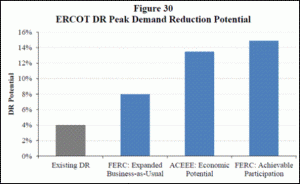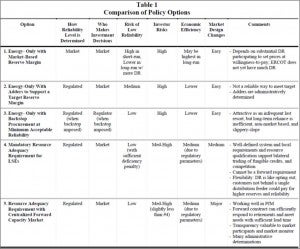Despite having escaped this summer without rolling blackouts and the kind of heat we experienced last year, Texas is still dealing with the energy crunch issue. Luckily, our state is home to the nation’s largest wind power industry and it contains about a fifth of the country’s wind turbines. The Electric Reliability Grid of Texas (ERCOT), the Texas grid operator, announced that earlier this month wind throughout the state contributed 26 percent of the load on the grid, setting a new record. On November 10, a total of 8, 521 MW was produced, beating the previous July 19 record. For the first eight months of this year, wind accounted for 8.7 percent of the grid’s energy.
This is in addition to wind helping Texas avoid blackouts in February of last year, when a cold front proved too much for many traditional power plants. On February 2, 2011, wind energy played a critical role in limiting the severity of the blackouts, providing enough electricity to keep the power on for about three million typical households. ERCOT confirmed that wind provided between 3,500 and 4,000 MW of electricity (about seven percent of ERCOT demand at that time), roughly what it was forecasted and scheduled to provide. Texas wind provided this electricity during the critical 5 to 7 a.m. window when the grid needed power the most.
As an E&E ClimateWire article points out, wind farms in west Texas contributed about 7,000 MW to the system on Nov. 10 when the record was hit. Coastal towers and turbines, which were key to avoiding power shortages last year, contributed about 1,100 MW of supply. Texas holds more than 10,000 MW of wind power capacity overall.
This is all welcomed news for an industry holding its breath as Congress debates the renewal of the expiring Production Tax Credit (PTC) for renewables, which provides a 2.2 cent per kilowatt-hour tax credit for the first ten years of electricity production from utility-scale turbines.
With Texas being a major manufacturer of wind equipment in addition to relying on it for power, many jobs hang in the balance. According to a Sierra Club report, “a typical new 250 megawatt wind farm will create 1,079 jobs – manufacturing jobs, construction jobs, engineering jobs and management jobs.” Another report by NRDC estimates that from a 250 MW project, “non-construction businesses would account for 557 jobs — 432 in manufacturing, 80 in planning and development, 18 in sales and distribution and 27 in operations and maintenance. Construction would check in with another 522 jobs, doing things like buildings roads and foundations, installing turbines and wiring and connecting the power plant to the grid.”
In Texas, the expiration of the PTC could not only mean stunting job growth but would also likely create layoffs. According to Walt Hornaday, president of Cielo Wind Power, an Austin-based wind farm developer, “We haven’t had the industry come to a stop like this before in a long, long time.” His company is pursuing work in other countries, but otherwise, he said, “we would definitely be looking at very large layoffs.” Even Governors Perry’s own report cites a Mitchell Foundation analysis that the expanding wind and solar energy industries are projected to add 6,000 jobs in Texas per year through 2020 and, as of last year, over 1,300 Texas companies employ nearly 100,000 workers in industries directly and indirectly related to renewable energy.
And for those that now claim energy subsidies must end, despite being proponents for fossil fuel dollars, let us not forget what it has taken and continues to take to support the fossil fuel industry. First, the largest subsidies to fossil fuels were written into the U.S. Tax Code as permanent provisions. Furthermore, the largest break, the Foreign Tax Credit, provides around $2.2 billion annually and applies to the overseas production of oil through an obscure provision of the Tax Code, which allows energy companies to claim a tax credit for payments that would normally receive less-beneficial tax treatment. In an analysis conducted from 2002 to 2008, by the Environmental Law Institute, fossil fuel subsidies accounted for $72 billion over that span of seven years. On the renewable side, over half of the $29 billion subsidy amount supports corn ethanol. For traditional renewables like wind and solar, the total amount received was $12.2 billion, amounting to $1.74 billion annually.
Given Texas’ resource adequacy problems, it makes no sense to divest from a clean resource that provides up to 26 percent of our power while growing the economy.
As we mentioned in August, please contact your elected officials and ask them to renew the PTC before the end of the year. It’s good for Texas, the nation, and the environment.















